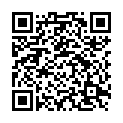|
|
|
| Module code: E2404 |
|
|
2V+1U+1P (4 hours per week) |
|
5 |
| Semester: 4 |
| Mandatory course: yes |
Language of instruction:
German |
Assessment:
Written exam
[updated 08.01.2020]
|
DFBEES-603 (P610-0014) Electrical Engineering - Renewable Energy and System Technology, Bachelor, ASPO 01.10.2019
, semester 6, mandatory course, technical
E2404 (P211-0013) Electrical Engineering and Information Technology, Bachelor, ASPO 01.10.2018
, semester 4, mandatory course, technical
|
60 class hours (= 45 clock hours) over a 15-week period.
The total student study time is 150 hours (equivalent to 5 ECTS credits).
There are therefore 105 hours available for class preparation and follow-up work and exam preparation.
|
Recommended prerequisites (modules):
None.
|
Recommended as prerequisite for:
E2429
[updated 28.01.2022]
|
Module coordinator:
Prof. Dr. Benedikt Faupel |
Lecturer: Prof. Dr. Benedikt Faupel
[updated 10.09.2018]
|
Learning outcomes:
After successfully completing this course, students will able to describe the structure and functionality of industrial control systems and explain typical devices and assemblies of industrial control technology. They will be able to apply known logical instructions and common data types for the description of control processes to predefined function and process descriptions. Students will be able to design their own solutions in standardized programming languages according to DIN-EN 61131-3 of control technology and will have the opportunity to implement and test these solutions on laboratory development systems.
[updated 08.01.2020]
|
Module content:
1. Introduction and motivation / History / Market situation 2. Principals of control technology: Terms / Structure of PLC systems / Areas of application for PLC systems / System architecture of automation solutions 3. Standards and guidelines according to DIN-EN 61131 4. Overview of automation devices and hardware product families: Controllers / Signal modules / Function modules / Communication modules / Decentralized hardware / Hardware project planning / Classic and TIA portal engineering tools 5. Structure and mode of operation of PLC programs: Programming languages (FBD, LD, IL) / STEP7 and CoDeSys operation pool / Binary signal processing / Analog signal processing / Storage, archiving program documentation / Test and online functions / Program simulation / Error diagnosis and handling 6. Programming strategies: Module overview (OB, FB, FC, DB, UDT) / Global and local variable declarations / Symbol table / Sequence programming with S7 graph / Diagnostics with error OBs 7. Communication systems: Basics of field bus systems (Profibus-DP, Profibus-FMS, Profibus-PA) / Decentralized system architecture / Automation pyramid / Devices and components 8. Operating and monitoring: Tasks / Visualization tools (WinCC, WinCC-flexible)
[updated 08.01.2020]
|
Teaching methods/Media:
Presentation, blackboard, lecture notes
[updated 08.01.2020]
|
Recommended or required reading:
Berger, Hans: Automatisieren mit SIMATIC S7-1500, Publicis MCD, 2017, 2. Aufl., ISBN 978-3-8957-8451-4 Seitz, Matthias: Speicherprogrammierbare Steuerungen für die Fabrik- und Prozessautomation, Hanser, (latest edition) Wellenreuther, Günter; Zastrow, Dieter: Automatisieren mit SPS - Theorie und Praxis, Vieweg, Wiesbaden, (latest edition) Wellenreuther, Günter; Zastrow, Dieter: Automatisieren mit SPS - Übersichten und Übungsaufgaben, Vieweg, Wiesbaden, (latest edition)
[updated 08.01.2020]
|


